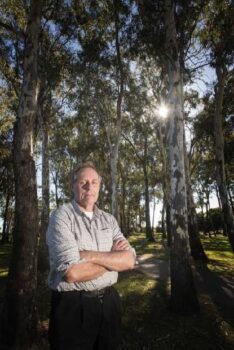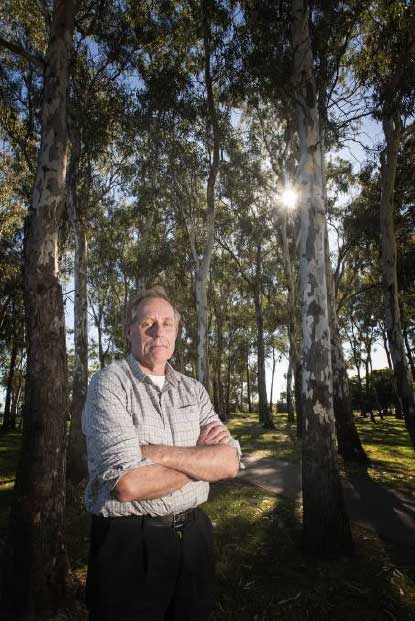 Phil began as a farmer, trained as an ecologist and has a long history in protecting the natural environment. As a mature age student, he studied science and volunteered to do wildlife surveys for national parks in 1995. He progressed to surveying the forests and woodlands on the north coast, tablelands and north-west slopes as part of the NSW regional biodiversity assessment. He has surveyed the majority of the national parks and nature reserves of the region, and, with The Australian Museum, surveyed western NSW conservation and western wildlife refuges for the former Department of Environment and Conservation.
Phil began as a farmer, trained as an ecologist and has a long history in protecting the natural environment. As a mature age student, he studied science and volunteered to do wildlife surveys for national parks in 1995. He progressed to surveying the forests and woodlands on the north coast, tablelands and north-west slopes as part of the NSW regional biodiversity assessment. He has surveyed the majority of the national parks and nature reserves of the region, and, with The Australian Museum, surveyed western NSW conservation and western wildlife refuges for the former Department of Environment and Conservation.
He has been in the front line in the battle to save forests and woodlands against the ravages of the coal and gas industries in NSW, especially in his native northwest of the state where he has campaigned for years to save Leard State Forest and The Pilliga from coal mines and coal seam gas developments.
Phil was a founding member of the Northern Inland Council for the Environment (NICE), which has been a potent force for environmental advocacy and protection in the region. NICE led the charge against two coal mines in the Leard State Forest near Boggabri in north-western NSW, taking legal action to challenge Commonwealth approvals in 2013.
He has frequently used his expertise as an ecologist, serving as an expert witness during the assessment that led to the protection of the Brigalow Belt South and Nandewar forests, as well as contributing thorough submissions to government processes in the hope of strengthening environmental protections for wildlife.
With ‘Aragorn-Strider’* like characteristics, Phil has tirelessly travelled the countryside minutely surveying, recording and photographing habitats, flora and fauna so he has a long term overview of the changes in our environment. He has appeared at many governmental hearings such as the Narrabri Gas IPC and the NSW Koala Inquiry. Unlike most ecological consultants, Phil not only does volunteer work of high professional standard, but also speaks publicly about the values of our environment and participates in environmental group activities.
From a farming background he is always willing to have conversations with any landholders on the practical benefits of caring for native vegetation and wildlife within a productive farming perspective. Often at considerable personal risk, when discourse has been rejected, he has also reported on illegal land clearing and collected evidence to aid prosecutions when all other avenues have failed. He features prominently in a recent book by Kate Holden The Winter Road: A Story of Legacy, Land and a Killing at Croppa Creek.
He is a passionate advocate for the retention of travelling stock routes and reserves particularly those with high conservation values.
Phil communicates well with a diversity of country people of all ages and is always keen to share his knowledge of, and concerns for, the protection of wildlife and their habitats and he has influenced many through his inspiring field days and excursions. He often addresses rural groups and is a valued guest speaker at Armidale NPA meetings, generously sharing his time and resources. Phil’s tireless efforts in understanding what is in the landscape, his dedication to protecting nature, surveying skills, his community mindedness and ability to communicate so effectively with others is epitomised by the following event as related by Kate Boyd:
‘In January 2021 Phil was asked if he was able to go to the Mole River dam site to look at the fauna when landowners were holding a Love Our River event for people to see what would be flooded. Phil got home from a week surveying terrestrial wildlife elsewhere, changed to aquatic survey gear and drove 330 km to the Mole River arriving late on Saturday, worked out where to set up his traps and nets for aquatic fauna and then joined others in hunting for frogs and terrestrial fauna. Overnight and early next morning he did an aquatic survey and recorded bat calls. By lunchtime the following day Phil was enthralling visitors with the turtles and fish he had found, demonstrating his care for each animal, and had records of 82 species including 9 threatened species. Phil then provided quotes for use in a media release and later gave an interview explaining why Mole River should be protected as “an ark for conservation”.
Submitted by Lynne Hosking for Armidale NPA
